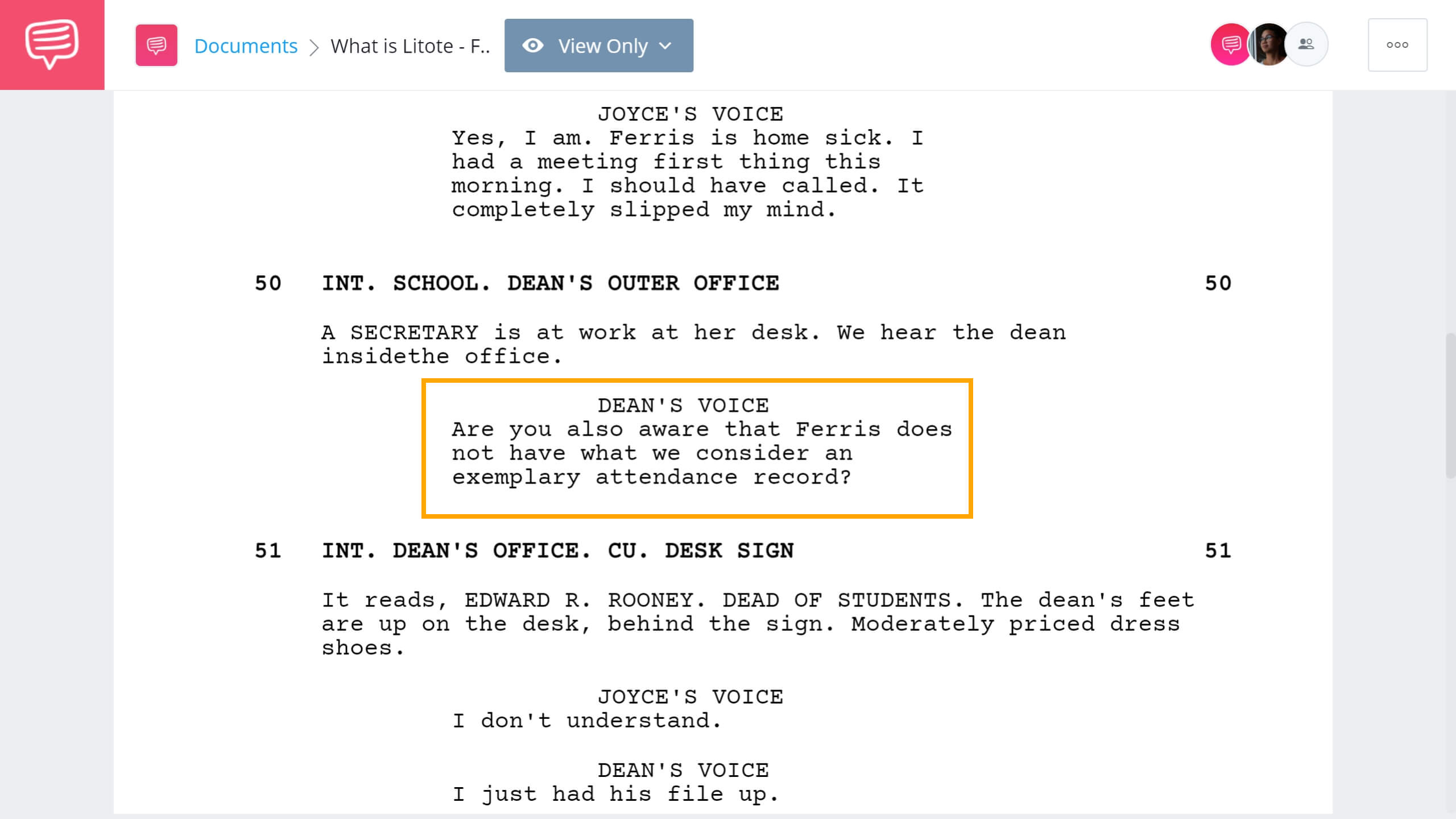Litotes may sound like it is a term from another language, but it is in fact one of the most commonly used literary devices in everyday language. Litotes can be found in literature, movies, pop cultural, and casual conversations. So what is litotes in literature? And how exactly do you pronounce it? In this article we’ll take a look at the litotes definition and some litotes examples of it to better understand why it is so commonly used.
What is litotes in literature?
Let’s define litotes in literature and film
As writers, we're often looking to master our craft. There is a lot to learn about language and the written word. Today's lesson is just a tiny part of that process. The funny thing is that most of us use litotes all the time without even knowing what they are and how they work.
For the everyday person, there's really no need to go any further than that. But for writers, that's not the case. Words and sentences can be shaped and designed to achieve a certain effect. And you never know when a technique like will become the ideal note to hit or color to apply.
Before we dive into some examples, we must first learn what it is and how to even pronounce it. Let’s take a look at the litotes definition.
LITOTES DEFINITION
What is litotes?
Litotes is an understatement that is created by utilizing a negative to affirm a positive. This is often achieved with a double negative. This device allows you to emphasize meaning without using the direct language correlated to that meaning. A simple litote is the phrase, “This food is not bad.” By stating the food is “not bad,” the phrase implies the food is the opposite of bad which is good. Litotes is a Greek word that translates to “simple.” Litotes is a close cousin of irony, but is achieved in a more specific way. It is commonly used in everyday conversations as well as literature and film.
Pronunciation of Litotes: LIE-tuh-teez
Common litotes examples
- “You are not as young as you used to be.”
- “That’s not a bad idea.”
- “He is not the sharpest tool in the shed.”
Related Posts
Define Litotes in literature
Litotes in literature
Litotes is used in literature as a way for writers to effectively convey an idea. The reason they are so effective is because listeners or readers have to pause to interpret the actual meaning of the phrase, making it stick even more.
Litotes can also allow writers to communicate information without being blunt or on the nose. For example, rather than saying a character is “stupid,” they may say a character is “not the sharpest tool in the shed.”
What is litotes in action? In the Old English epic poem Beowulf, it is used to affirm Beowulf’s ability to wield the sword.
“[Beowulf] raised the hard weapon by the hilt, angry and resolute – the sword wasn’t useless to the warrior.” (Beowulf, line 1575)
Using litotes also provides variety. Rather than bluntly saying, “The sword was useful to Beowulf,” the litotes allows the reader to engage in what is occurring in the story. They can also be used within film and screenplays.
Litotes meaning
Litotes in film
What is litotes used for in cinema and film? Litotes is commonly used in the dialogue of a screenplay to both express an idea as well as reflect the snarkiness or sarcasm of a character. A great example of this can be found in the screenplay of Ferris Bueller’s Day Off.
When Ferris’ dean, Edward Rooney, calls his Ferris’ mother to tell her Ferris is not at school, Rooney uses a litotes to express Ferris' constant absences. We brought the screenplay into StudioBinder’s screenwriting app to take a deeper look at the scene. Take a look at how the litotes not only communicate the information of Ferris’ absences, but Rooney’s unenthusiastic tone as well.
Litote Example in Ferris Bueller’s Day Off • Read Full Scene
As you can see from this scene, litotes is a great literary device that can be used in dialogue to both communicate information while also conveying a character’s tone. The importance of Rooney’s tone in this scene is important because it establishes his attitude toward Ferris and ultimately a large conflict in the film.
The next time you are looking to create tone simply by communicating information, keep litotes in mind. It’s use of irony lends itself to both the content of the writing as well as to the engagement of the audience. Keeping an ear out for how litotes are used in everyday conversations can also help you integrate it into your dialogue in a natural and effective way.
Related Posts
UP NEXT
The Ultimate Guide to Literary Devices
Litotes is one of the many literary devices that writers of all mediums utilize to engage an audience. Understanding these literary devices will make you a better equipped and more effective writer. Check out our comprehensive list of literary devices as well as definitions in our next article.

